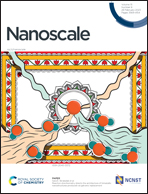Polysaccharide-based C-dots and polysaccharide/C-dot nanocomposites: fabrication strategies and applications
Abstract
C-dots are a new class of materials with vast applications. The synthesis of bio-based C-dots has attracted increasing attention in recent years. Polysaccharides being the most abundant natural materials with high biodegradability and no toxicity have been the focus of researchers for the synthesis of C-dots. C-dots obtained from polysaccharides are generally fabricated via thermal procedures, carbonization, and microwave pyrolysis. Small size, photo-induced electron transfer (PET), and highly adjustable luminosity behavior are the most important physical and chemical properties of C-dots. However, C-dot/polysaccharide composites can be introduced as a new generation of composites that combine the features of both C-dots and polysaccharides having a wide range of applications in biomedicines, biosensors, drug delivery systems, etc. This review demonstrates the features, raw materials, and methods used for the fabrication of C-dots derived from different polysaccharides. Furthermore, the properties, applications, and synthesis conditions of various C-dot/polysaccharide composites are discussed in detail.

- This article is part of the themed collection: Recent Review Articles


 Please wait while we load your content...
Please wait while we load your content...